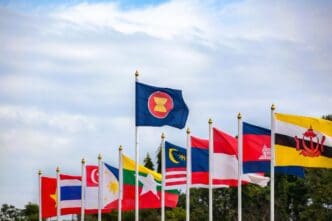Executive Summary
The Story So Far
Why This Matters
Who Thinks What?
US Trade Representative Jamieson Greer has called for “fair and balanced trade” with the Association of Southeast Asian Nations (Asean) during a meeting with economic ministers in Kuala Lumpur, as the bloc’s economies brace for slower growth forecasts attributed to recent US tariffs. The call comes as S&P projects Asean’s average economic growth to slow to 4.5 percent in 2025, with businesses in the region expressing concern over narrowing access to the world’s largest consumer market.
US Trade Demands and Economic Impact
Washington’s trade tsar, Jamieson Greer, welcomed trade with the 10-member group during his opening remarks on Wednesday, emphasizing that the US hoped it would be “balanced and reciprocal.” His comments preceded a closed-door meeting with Asean ministers.
The discussions unfold against a backdrop of recent US tariff implementations. President Donald Trump has imposed tariffs ranging from 10 to 40 percent on Asean member states in recent weeks, stating these measures were necessary to address Washington’s significant trade deficits with its partners.
Regional economists have subsequently revised growth forecasts for Asean downwards. Despite the tariffs, Asean’s exports to the US increased by 16 percent last year, reaching US$312 billion.
Asean’s Response and Future Engagement
Greer affirmed the US’s interest in continuing to collaborate with Asean to expand trade that benefits both sides, aiming to foster a “prosperous world economy.” This suggests an ongoing dialogue despite the current trade tensions.
Malaysia, which holds the chairmanship of Asean this year, indicated on Tuesday that the bloc’s economic ministers would leverage an existing trade and investment agreement during their meeting with Greer. This move is widely interpreted as an attempt to negotiate improved access to the US market for Asean members.
Outlook
As Asean navigates the implications of these tariffs and seeks to ensure continued access to the US market, the discussions underscore the ongoing complexities in global trade relations. The bloc’s efforts to leverage existing agreements highlight its strategic approach to mitigating potential economic headwinds.








